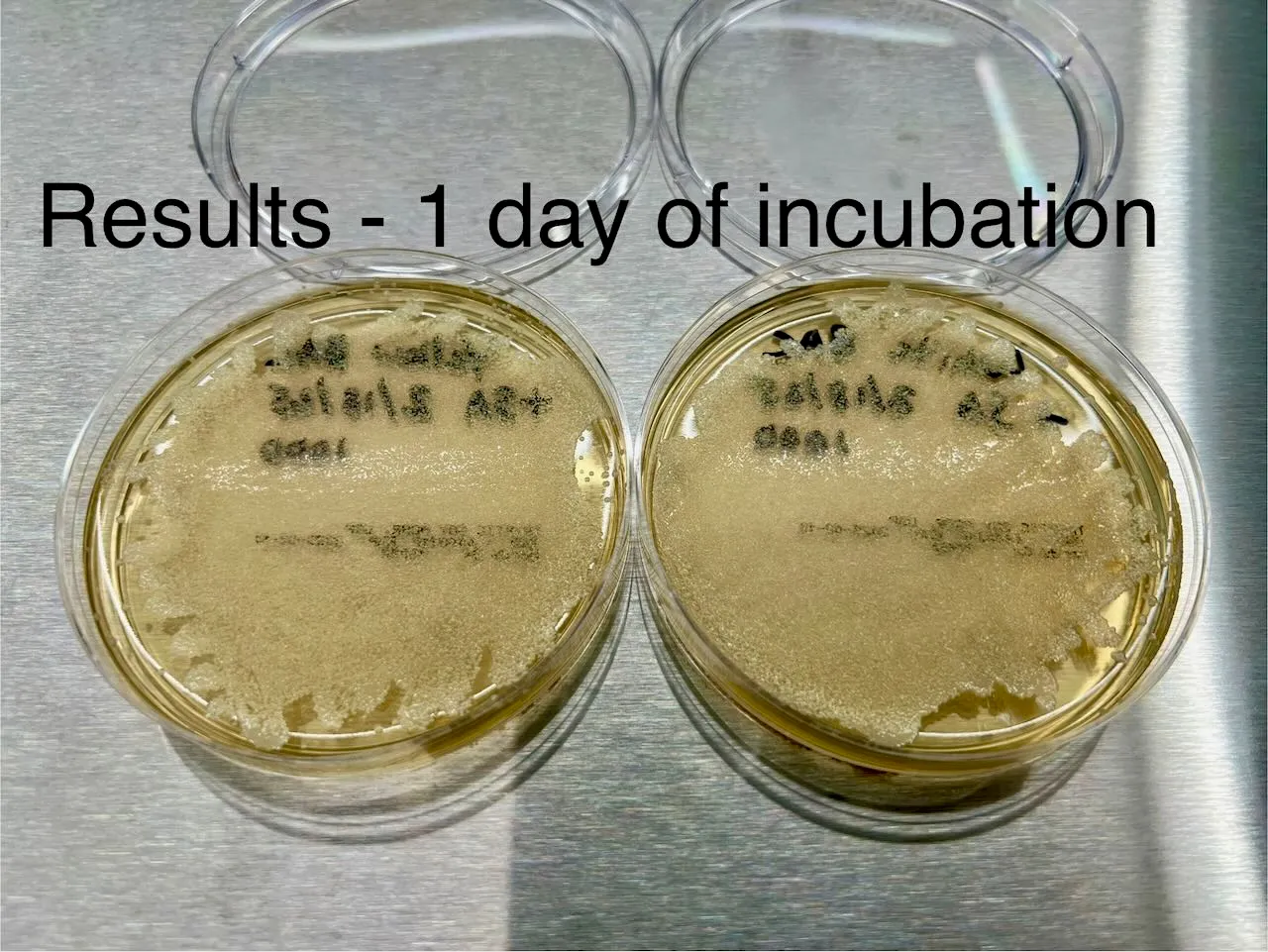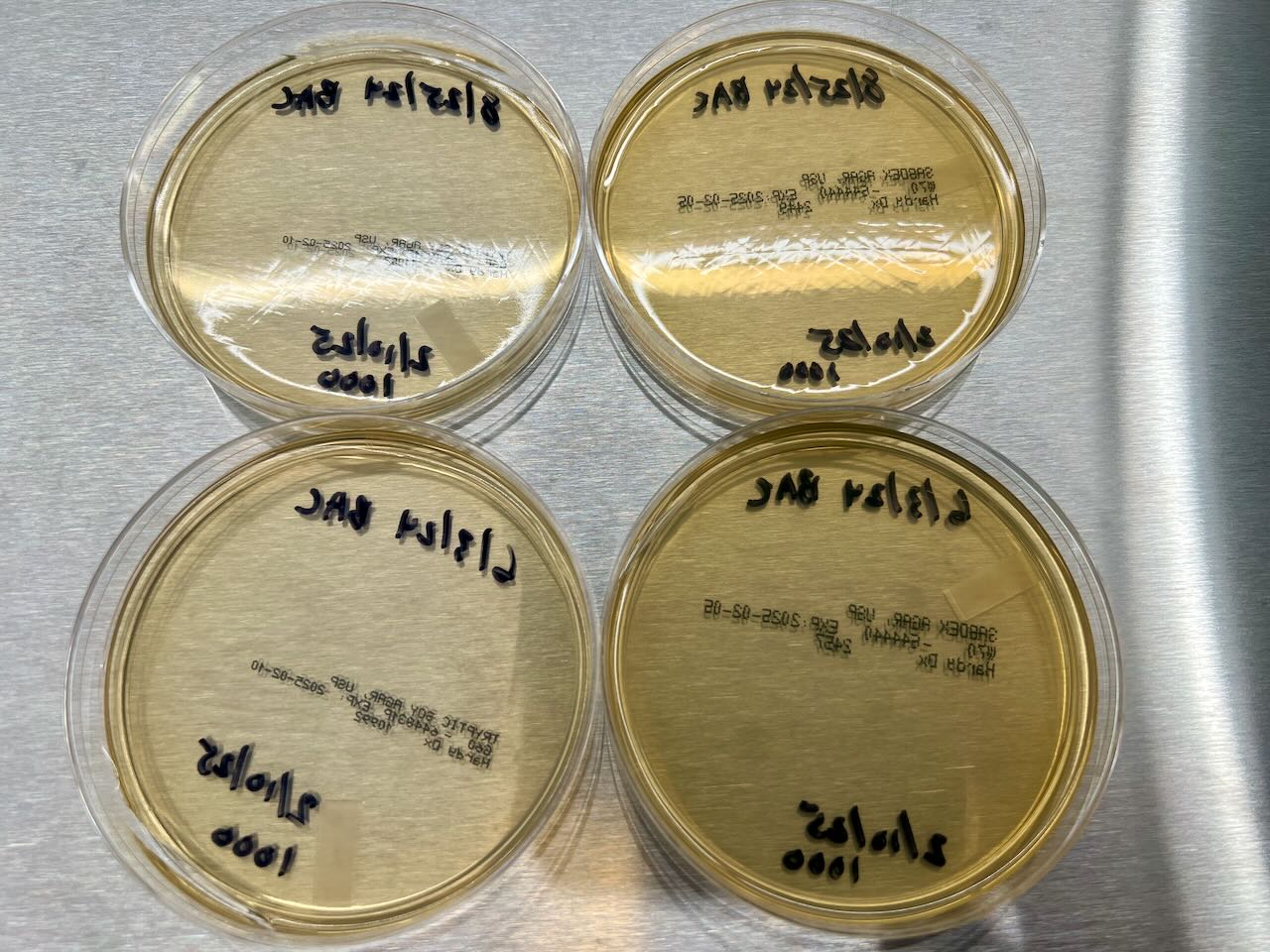· 2 min read
Experiment 1 BAC Water Effectiveness
How effective is 0.9% benzyl alcohol bacteriostatic (BAC) water when introduced to a needle tip that has been dipped into a Staph colony, a common environmental organism?
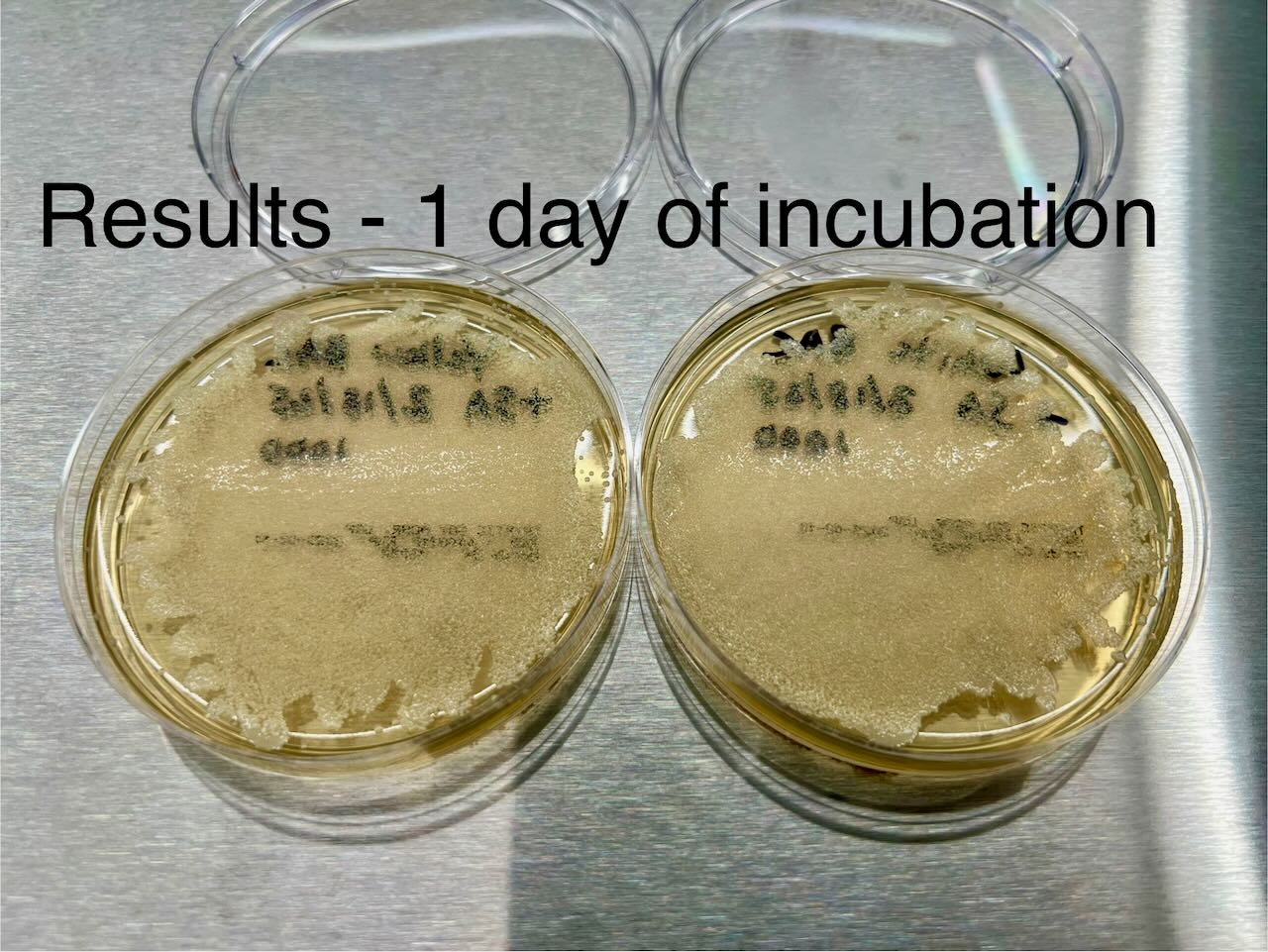
Introduction
Some research products come from sources with unknown manufacturing processes. Many researchers are curious of the sterility of the products they receive. I wondered if a product was contaminated, would BAC water be sufficient to induce sterility.
How effective is 0.9% benzyl alcohol bacteriostatic (BAC) water when introduced to a needle tip that has been dipped into a Staph colony, a common environmental organism?
Methods
- Two 3ml glass BAC vials, maintained at room temperature, from different manufacturers were used.
- Both vials were previously cultured without any manipulation and were sterile.
- A sterile needle tip was dipped into a pure Staph colony.
- The needle was then inserted into the BAC vial through the plunger and that vial was inverted 5 times.
- A new sterile needle was inserted through a different spot in the plunger to drawn up 0.5ml of BAC.
- 0.5ml of BAC was added to a culture plate ideal for Staph growth and was incubated. Fig 1
Results
After 1 day of incubation the plates were checked for growth. Dense bacterial growth was present. Fig 2, Fig 3.
Discussion
Benzyl alcohol is bacteriostatic and not a bactericide meaning it should prevent bacterial growth but often won’t kill it. A needle tip was identified as a way to introduce the most minimal amount of Staph organism. As obvious from the pictures, the BAC water used in this experiment was not effective to kill the Staph that was introduced representing a contaminated research product.
Supplimental
Figure 1
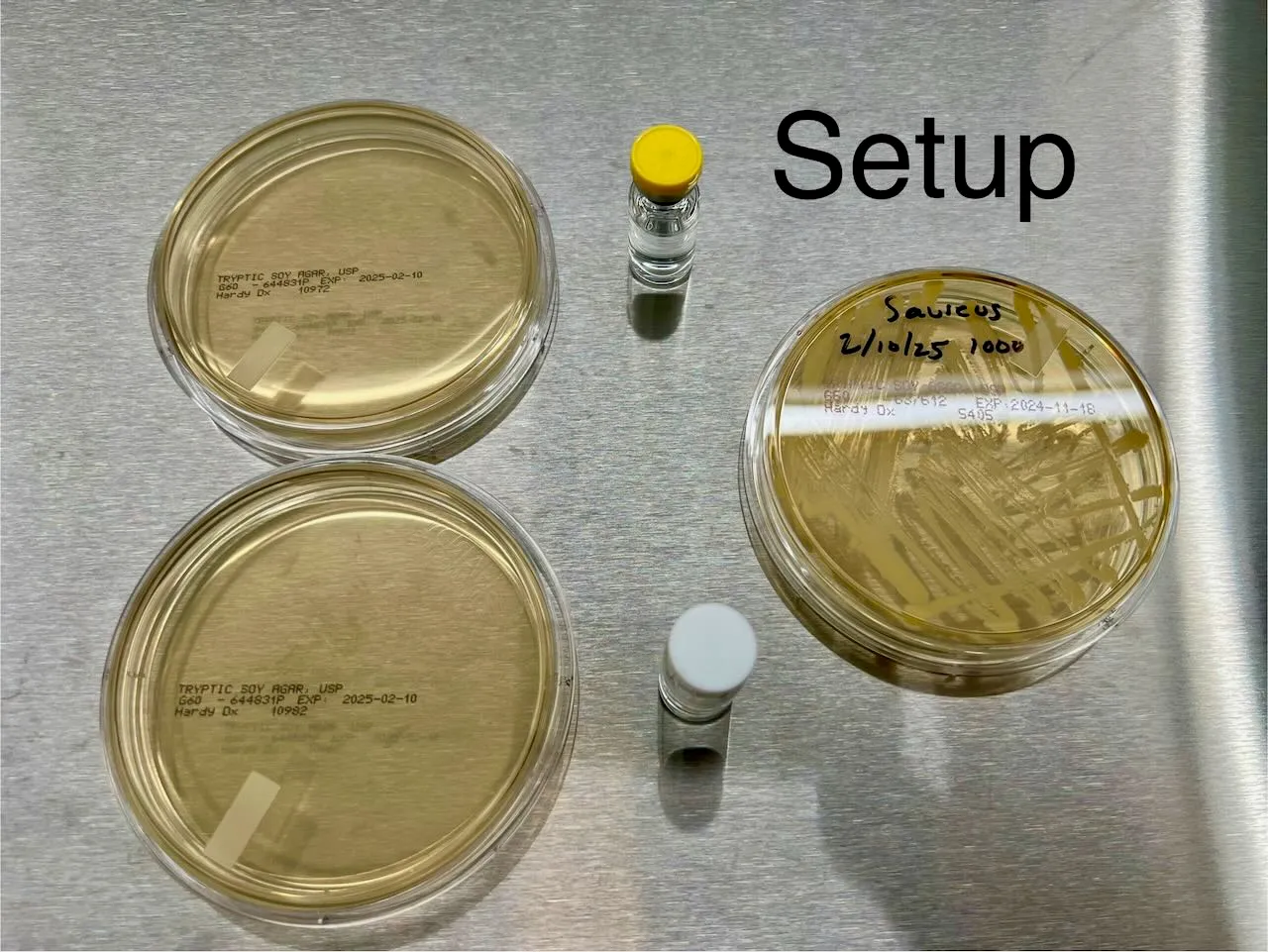
Figure 2
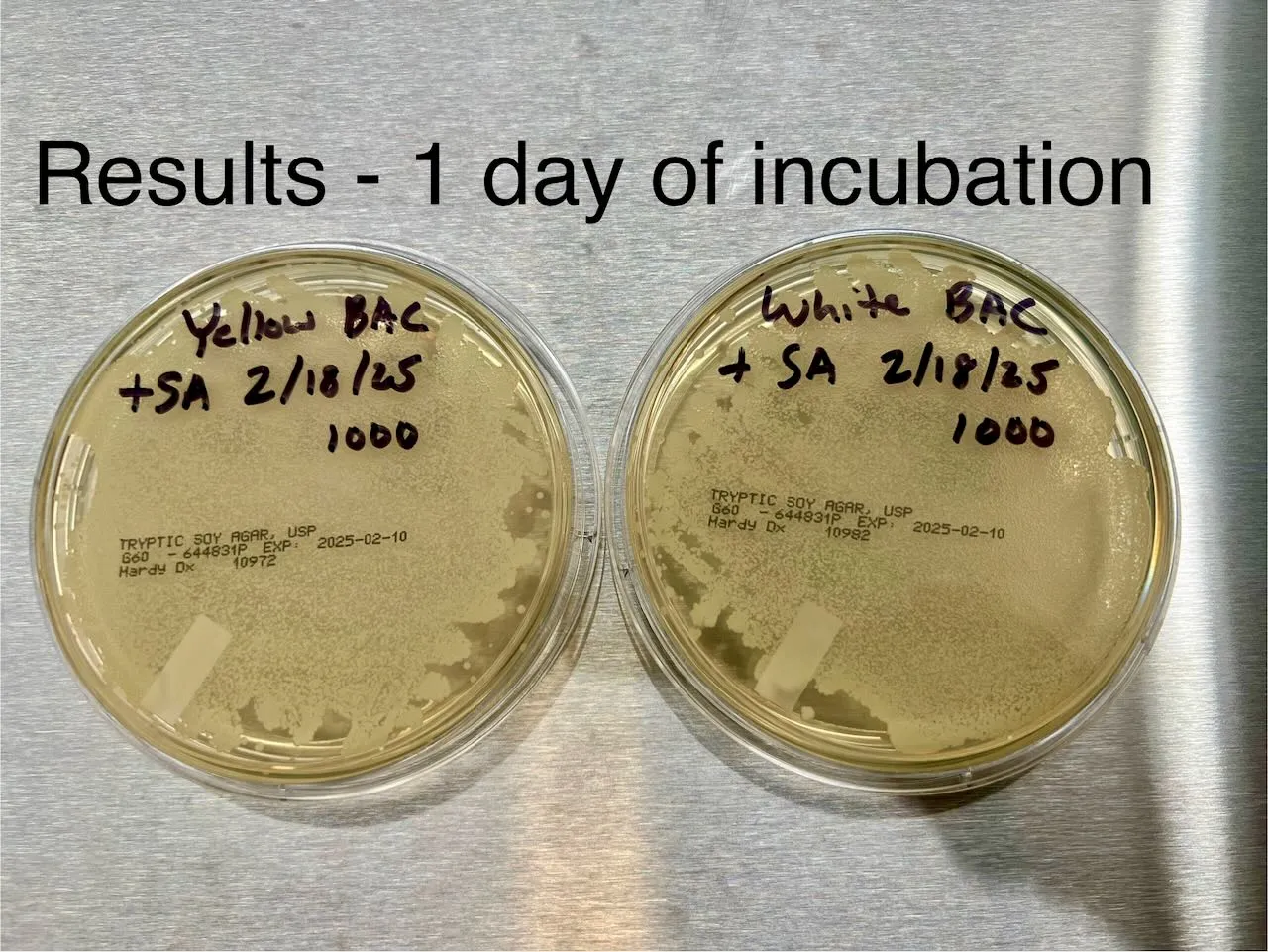
Figure 3
